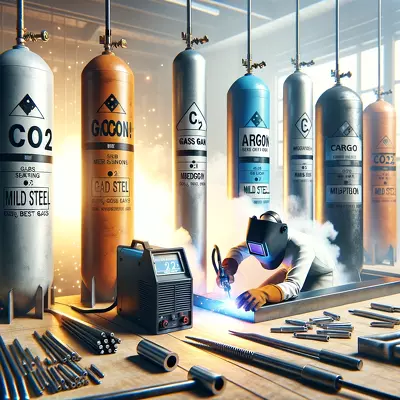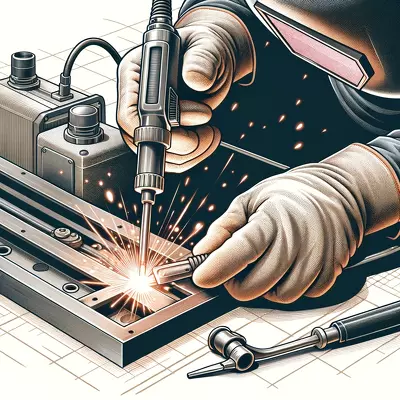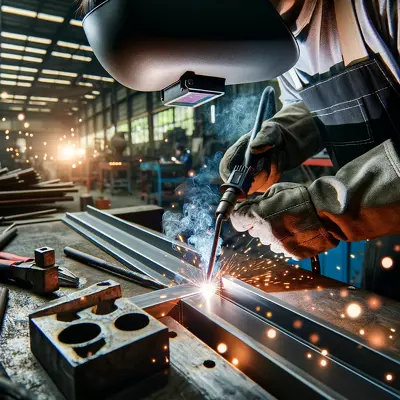The Secret Ingredients: Choosing the Perfect Gas for MIG Welding Mild Steel

When it comes to MIG welding mild steel, selecting the right shielding gas is crucial for achieving clean, strong welds. The gas not only protects the weld pool from atmospheric contamination but also influences bead shape, penetration, and overall weld quality. This guide explores the optimal gases for MIG welding mild steel, considering factors like cost, weld appearance, and mechanical properties to help welders make informed choices for their projects.
I. Introduction
In the realm of metal fabrication, the art and science of MIG welding mild steel stand out for its blend of accessibility and versatility. This technique relies heavily on the interaction between the welder’s skill, the equipment used, and the materials being joined. Central to this process is the choice of shielding gas, a factor that significantly affects the outcome of the welding project. Understanding the properties and effects of different gases can empower welders to produce superior results, combining strength, aesthetics, and efficiency in every weld.
II. Understanding MIG Welding and Mild Steel
A. Basics of MIG Welding
MIG welding, or Metal Inert Gas welding, utilizes a continuously feeding wire electrode and a shielding gas to create welds. This process is favored for its speed, the minimal cleanup required, and its applicability to a wide range of metals and thicknesses. The shielding gas plays a crucial role in protecting the molten weld pool from atmospheric contaminants, ensuring the integrity and quality of the weld.
B. Characteristics of Mild Steel
Mild steel, a low-carbon steel, is prized for its weldability, strength, and flexibility in various applications. Its low carbon content makes it easier to weld than high-carbon and alloy steels, offering a good balance between strength and flexibility. These properties make mild steel a common choice for the construction, automotive, and manufacturing industries.
C. Importance of Shielding Gas in MIG Welding
The selection of shielding gas influences not only the quality of the weld but also its appearance and mechanical properties. Different gases can affect the weld’s penetration, arc stability, and spatter amount, so choosing gas is a critical decision based on the project’s specific requirements.
III. Types of Shielding Gases Used in MIG Welding
A. Pure Gases
Pure gases, such as argon and carbon dioxide, are commonly used in MIG welding. Argon is favored for its ability to produce a stable arc and reduce spatter, while carbon dioxide is appreciated for its deep penetration characteristics.
B. Gas Mixtures
Gas mixtures combine the benefits of two or more gases, tailoring the shielding environment to suit specific welding needs. Argon-CO2 mixtures are popular for their versatility, offering a balance between arc stability, penetration, and reduced spatter.
IV. Criteria for Selecting the Best Gas
A. Weld Quality
The primary consideration in selecting a shielding gas is the desired weld quality. This includes considerations of arc stability, penetration depth, and the final appearance of the weld.
B. Cost-Effectiveness
Economic considerations often play a significant role in gas selection. The cost of the gas must be balanced against the benefits it provides in terms of weld quality and efficiency.
C. Material Compatibility
The shielding gas must be compatible with the base metal. The chosen gas should enhance the weldability of mild steel without causing adverse effects such as excessive oxidation or porosity.
V. The Best Gases for MIG Welding Mild Steel
A. Carbon Dioxide (CO2)
CO2 is a cost-effective option that provides deep penetration, making it suitable for thick materials. However, its use can lead to increased spatter and a less stable arc compared to gas mixtures.
B. Argon and Carbon Dioxide Mixtures
These mixtures are widely regarded as the best choice for MIG welding mild steel, offering a good balance between arc stability, penetration, and aesthetics. They reduce spatter and allow for better control over the weld pool compared to pure CO2.
C. Argon with Oxygen Mixtures
Adding a small amount of oxygen to argon can enhance the arc stability and fluidity of the weld pool, resulting in a smoother bead appearance. This mixture is particularly useful for thin materials and complex weld geometries.
VI. Comparing Shielding Gases
A. Advantages and Disadvantages of CO2
CO2 is appreciated for its deep penetration and cost-effectiveness. However, its aggressive nature can increase spatter and negatively impact the weld’s aesthetic qualities.
B. Benefits and Limitations of Argon-CO2 Mixtures
Argon-CO2 mixtures provide an excellent compromise, enhancing arc stability, reducing spatter, and improving weld appearance. Their main limitation is the higher cost compared to pure CO2.
C. Pros and Cons of Argon-Oxygen Mixtures
These mixtures offer superior weld appearance and good penetration but are more suited to thinner materials. The addition of oxygen can slightly increase oxidation risk, necessitating careful control.
VII. FAQs
Q: What is the best overall gas for MIG welding mild steel?
A: Argon and carbon dioxide mixtures are generally considered the best for their balance of quality, control, and versatility.
Q: Can pure argon be used for MIG welding mild steel?
A: Pure argon is not typically recommended for MIG welding mild steel as it can lead to shallow penetration and an unstable arc.
Q: What are the cost implications of using mixed gases?
A: Mixed gases tend to be more expensive than pure gases but offer improvements in weld quality that can justify the additional expense.
Q: How does shielding gas affect weld spatter?
A: Shielding gases like argon-CO2 mixtures tend to reduce spatter compared to pure CO2, which can lead to more cleanup.
Q: Is there a difference in welding speed when using different gases?
A: Yes, the choice of shielding gas can affect welding speed. CO2, for example, allows for faster welding due to deeper penetration.
Q: How do I choose between argon-CO2 mixtures and argon-oxygen mixtures?
A: The choice depends on the material thickness and the desired weld appearance. Argon-CO2 is more versatile, while argon-oxygen is better for thinner materials and smoother finishes.
Q: Can the wrong gas choice affect the strength of the weld?
A: Yes, choosing the wrong shielding gas can lead to defects such as porosity or excessive oxidation, which weaken the weld.
Q: What gas should I use for welding aluminum?
A: For welding aluminum, pure argon is the recommended choice because it provides a clean, stable arc and good cleaning action, essential for achieving strong, high-quality welds on aluminum materials.
VIII. Conclusion
A. Summary of Key Points
The choice of shielding gas is pivotal in MIG welding mild steel, impacting everything from weld quality to cost-efficiency. While CO2 offers economic benefits and deep penetration, argon-based mixtures provide the best overall results, balancing arc stability, penetration, and aesthetic appeal.
B. Recommendations for Welders
Welders should carefully consider their project requirements when selecting a shielding gas, weighing factors such as material thickness, desired weld appearance, and budget constraints. Experimentation and experience will also guide welders to the best gas choices for their specific applications.
IX. Suggested Readings
The exploration of shielding gases in MIG welding is an ongoing journey for many welders. For those seeking to deepen their understanding, the following books offer valuable insights:
- “Welding Principles and Practices” by Edward R. Bohnart is a comprehensive guide that covers a wide range of welding techniques, including detailed discussions on the role of shielding gases in MIG welding.
- “Modern Welding Technology” by Howard B. Cary is a textbook that offers an in-depth look at the science behind welding processes, including the effects of different shielding gases on weld quality.
- “The Welder’s Handbook: A Complete Guide to MIG, TIG, Arc & Oxyacetylene Welding” by Richard Finch: Practical advice and tips for welders of all levels, with specific recommendations for gas selection and usage.
These resources can provide both novice and experienced welders with a broader perspective on the complexities of MIG welding and the critical role of shielding gases. As the field of welding continues to evolve, staying informed through reputable sources will ensure that welders can adapt and thrive in their craft.






